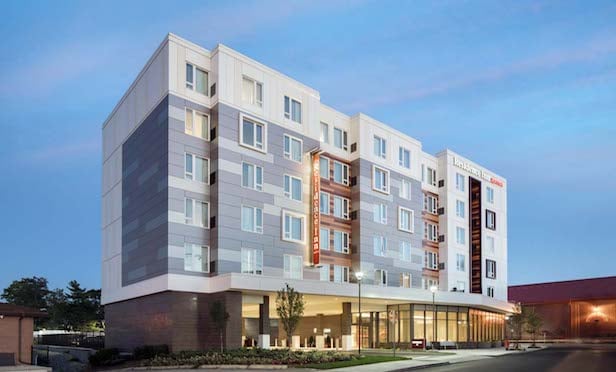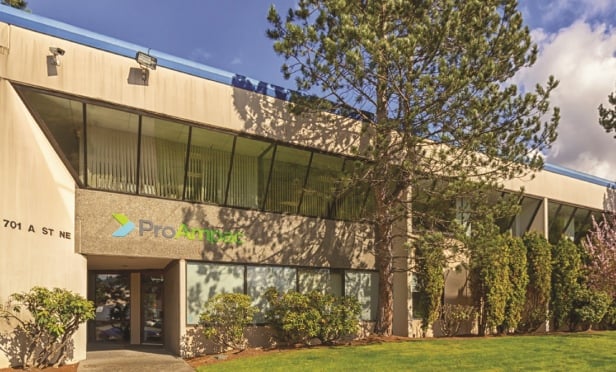[IMGCAP(1)]
PHOENIX—Following one of the strongest years on record for multifamily, Berkadia Commercial Mortgage anticipates ore of the same in 2016. Partly this is due to economic and demographic trends that continue to bode well, and partly it's due to the sector's bedrock nature: everyone needs a place to live. That being said, the old saw that all real estate is local certainly applies in the apartment sector, and most of Berkadia's annual forecast, issued Monday, drills down into the fundamentals of the 44 metro areas that the firm surveys.
To get the view from 30,000 feet, GlobeSt.com spoke with David Delich, senior director of research at Berkadia; and industry veteran Keith Misner, who recently joined the firm as head of investment sales. An edited version of that conversation appears below.
GlobeSt.com: As the economic recovery has progressed over the past few years, the rate of recovery has varied by region and individual market. Has this been as true of multifamily as it has been of, say, the office sector in terms of fundamentals and pricing?
[IMGCAP(2)]
Keith Misner: The apartment sector has certainly led the way compared to the other sectors, because it's so directly connected to job creation. When there's job creation, there is new and renewed demand for housing. Shelter is one of the basic needs, of course. Not everyone needs to shop and not everyone needs to work in an office, but you need shelter, so it's very quick to react to positive things. You still need shelter even in downturns, but things get better faster for the apartment sector than any of the others.
GlobeSt.com: Therefore, the time differences among apartment markets coming back to full strength sooner have been a lot less pronounced than in other sectors.
David Delich: I certainly think you see the recovery in terms of construction and investment activity versus retail and office. Those sectors are on the mend, where you have construction and investment on the way back up to previous peaks, but if you look at apartment fundamentals, vacancy in 2015 reached a 15-year low while asking rents appreciated at a healthy clip. In terms of investment activity you have operators both building and buying their way into local apartment markets at a record pace. It's certainly more advanced in multifamily, whereas office and retail in a lot of respects are just approaching the previous healthy points in past cycles. In the apartment sector, construction and investment have already reached pre-recession levels. And then you have the very healthy underlying apartment fundamentals, maintaining demand for both investments and development.
Misner: The fundamentals are what's really important here. The capital markets are still very stable. But the demographic shift, with Millennials outnumbering their parents and grandparents, is a massive difference this go-round. The primary cohort of people who typically want to rent apartments, people in their 20s, want to move to more urban environments. And it doesn't have to be just the "sexy six cities" or whatever; it's just the big city near where they grew up, near where they went to college. You're seeing Main and Main secondary and tertiary markets being very sought after: the place to be and live. So there's two things, there's job creation and there's where the people who do the jobs want to live.
GlobeSt.com: What are some markets that we should be paying especially close attention this year, in terms of fundamentals or investor demand?
Delich: In 2015, we had 44 markets that we surveyed; many were adding jobs at a healthy pace at or above the national level. Are we seeing improvements beyond the primary markets? We certainly are. We had San Francisco, which is certainly a primary market, but also Salt Lake City and San Antonio. All those metros added jobs at a pace of 4% or greater in '15 and are expected to be top metros in '16. So we're definitely seeing expansion, not just in secondary markets but also tertiary markets.
We have some markets—including Sacramento, Detroit, Chattanooga—that have vacancy in the low 4% range or lower. Some of it has to do with supply that hasn't quite ticked up; units are coming on line but not quite as in the primary metros. Then you've got some other metros where the employment growth is resoundingly healthy. New York/New Jersey is one; San Francisco is projected to grow at 4.2%. Boston, San Antonio, Las Vegas, Atlanta—some of these metros will have job creation at almost double the national rate, and that will definitely funnel demand for shelter.
GlobeSt.com: Are there factors that could represent either challenges or opportunities for investors in multifamily?
Misner: Since each market stands on its own, and we track 40-plus markets, there are going to be 40-plus different answers. Houston, for example, is a very high renter demand market. Millennials want to move there; there's a lot going on in Houston aside from oil. And there are a lot of apartments being built. So probably what will happen in places like Houston, where it's very elastic to certain jolts if you will, the pace of new supply will slow down, because the capital system is so transparent and efficient that all the participants in the risk/reward spectrum will tap the brakes.
And each market will have certain aspects of that. There are certain markets that have land issues, and there's just not a lot of land to build, like the Bay Area of San Francisco. So it's going to be a localized phenomenon of where growth continues and how it continues. There will be 44 different answers, because everything's tied to the job creation and the sustainability of those jobs.
© 2025 ALM Global, LLC, All Rights Reserved. Request academic re-use from www.copyright.com. All other uses, submit a request to [email protected]. For more information visit Asset & Logo Licensing.








